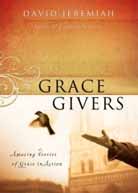 Grab a recipe. Writing is filled with recipes all around us, waiting to be scooped up, whipped together, and mixed with a blend of our personal ingredients. But where do you find them? You don't need to purchase a book or search writer's sites to find them, you only need to look as far as your own writing.
Grab a recipe. Writing is filled with recipes all around us, waiting to be scooped up, whipped together, and mixed with a blend of our personal ingredients. But where do you find them? You don't need to purchase a book or search writer's sites to find them, you only need to look as far as your own writing. Choose an article that you've written before, that you like for some reason. You might not even know why you like it--you just do. Got it? Now copy the first paragraph (or two if they're short) into a word document, like this:
| God delights in his people—you and I. He enjoys us so much that even the very hair on our head is numbered. Can you imagine the accounting department He must have to keep track of mine? I’m changing my do every month. (I just got it trimmed again yesterday by the way). I wonder, would we take the time to number His hair if we could? Would we linger in His presence that long? Or is God merely a means of supplying our need? Let's dig and find out... |
Now choose a topic--any topic that has been on your mind this past week--maybe it's pizza pops, maybe it's your children, maybe it's cooking... whatever it is, trust yourself to write on that topic and the article will fall into place.
Here's where the recipe part comes in. See my paragraph above? I snagged it from a post that I liked at Live Well Wednesdays; I'm going to use it as my fire starter. I'll dissect it, carefully following the recipe, which is this:
| 1. Begin with a statement. If your topic is children, then say something like, "My children have been fighting all week," or "My children were adorable this morning!" etc. 2. Use a verb to describe your topic, with an expansion of that verb. 3. Ask a question. 4. Answer the question and add a side note (a dash of humor if you like). 5. Contemplate that thought. 6. Ask the reader two questions. 7. Introduce the rest of the piece. |
Once you have the first paragraph or two done according to the recipe, the creativity will usually flow on it's own from there.
Here's what I came up with:
| My son Graham is home today. He isn't ill all that often, so when he started hurling at school, I knew it was time to take the little dude home. I don't always know when my kids are sick, or when they are simply "homesick," do you? Sometimes the green in their cheeks will cue me in--sometimes not (it's the dark shades of green that get me concerned most). Has your tike ever woken up sick, then miraculously recovered at around 9:15? Have you ever wondered if you should pack them up and bring them right back to school? If so maybe there's something else we should consider... |
That's just off the top of my head, but as you can see I opened the article up and once I did I was on a roll. Now that I started, I want to talk about a child's need for cuddly days, and our need for them too. When it's just me and he, or me and her--home for a day. "Homesick" might be every bit as stressful as a tummy ache, for little ones who are gone all day. Ah, maybe I'm too soft!
When I use the recipe idea to get started, I sometimes find that I don't even keep the first paragraph at all, but that it was helpful in getting me off to a good start.
I have a sick kid at home today that needs juice and a cuddle, so I guess I had better run. :)








